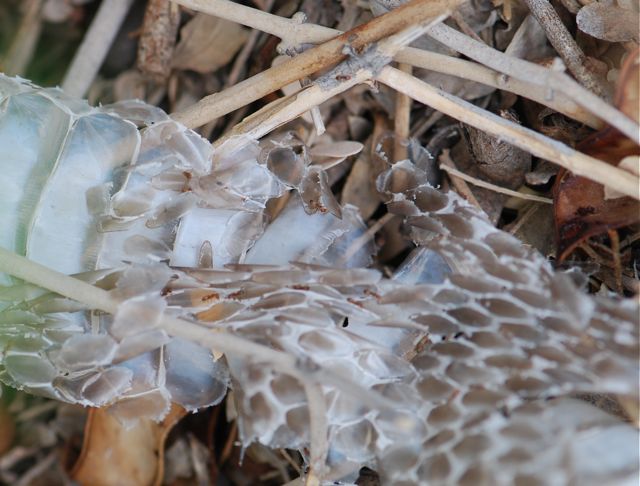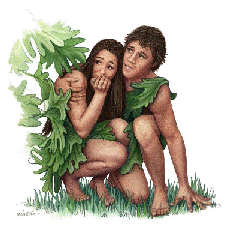[First posted in 2012; a thought-provoking article challenging the traditional Christian interpretation and justification for the shedding of blood to receive God’s forgiveness of sin. How far has this major world religion diverged from the plain meaning of an “Old Testament” text? How has Christianity used as “prooftext” the OT prequel to its NT sequel? This is one of numerous misused and misinterpreted handpicked texts taken out of context. So this is just one of our many efforts to correct misreading and interpreting out of context that is so prevalent among those who consciously or unconsciously force OT prequel to conform to NT sequel instead of the other way around which is the natural and logical way to read any book that has two parts. —Admin1.]
—————————-
One of the unexpected, intriguing, thought-provoking answers we’ve ever received in Ask the Rabbi is from Rabbi M. Younger [aish.com] about Genesis 3:7, 21.
[AST] 7 Then the eyes of both were opened, and they knew that they were naked. And they sewed fig leaves together and made themselves loincloths.
[ESV] 7 Then the eyes of both were opened, and they knew that they were naked. And they sewed fig leaves together and made themselves loincloths.
[EF] 7. The eyes of the two of them were opened and they knew then that they were nude. They sewed fig leaves together and made themselves loincloths.[AST] 21 And HASHEM God made for Adam and his wife garments of skin and He clothed them.
[ESV] And the Lord God made for Adam and for his wife garments of skins and clothed them.
[EF] 21 Now YHWH, God, made Adam and his wife coats of skins and clothed them.
On first reading:
Adam and Eve choose to cover themselves with fig leaves but the Creator changes that covering with “garments of skin” or “clothing from animal skins”.
Left unstated is something commonly presumed: to get animal skin, one has to slaughter an animal, take a life, shed blood.
Just think: Adam and Eve, being the first couple, probably had some difficulty understanding the warning “For the day you eat of it, you shall surely die.” Presumably, they have never witnessed death nor caused the death of other living creatures. They have never killed an animal for food because they were vegetarian/vegan; nor for clothing since they had never felt ashamed that they were naked . . . until they disobeyed.
Following this trend of thought, it would appear that the first who takes an animal’s life is the Creator of Life Himself! The seriousness of the first couple’s disobedience seems to have dire consequences on animals who will then become the sacrificial substitutes for disobedient humanity.
At least that is also implied in the answer of one rabbi to the question: why was the serpent cursed if it was simply a symbol of man’s sinful inclination? The created world suffered and continues to suffer from humanity’s continuing violation of God’s revealed will. It is another provocative thought.
Back to “animal skin.” Have we thought of reading that verse any other way? We read “animal skin” and jump to only one conclusion, why? Because we are oriented to progressive revelation’s ‘fast-forward’ and relating it to the God-Son Jesus, shedding his blood to satisfy the God-Father’s divine justice.
Not the Jewish rabbis! Let us not miss the fact that Torah has been entrusted to them:
- they read Hebrew,
- they think Jewish,
- so they read and interpret their own Scriptures
- in a totally different way
- and connect the symbolism consistently
- with the wisdom, justice, nature and attributes of the God of Israel
- and what their Torah has taught about
- how to deal with sin
- and reconcile with their God.
There is one animal:
- the first one identified in Scripture,
- and used to symbolize animal instinct in man that needs to be tamed and controlled;
- the one that represents man’s inner conscious or unconscious desire to go against divine prohibition;
- the very same animal which, like many other species that moult, is able to shed its skin without shedding blood to rejuvenate itself.

Image from blog.growingwithscience.com
Rabbi Younger’s answer to “animal skin” is exactly that: snake skin.
But why a snake? Why not?
Used as a symbol —
- the serpent of desire within us
- is the alternative choice to the other inclination to obey God’s will —
- we could ‘shed’ that evil inclination
- and renew ourselves everytime we face temptation,
- a challenge for us to obey God’s will
- or give in to our will.
It fits in the scheme of God’s teaching in Torah that sin and its judgment is not God’s last word to man. There are second and more chances to rise from falling, from failure, from missing the mark. Sin itself could be turned into a springboard for one’s return to God, but not without repentance, confession, and renewal.
When Genesis progresses to the story of Cain and Abel, God’s preference for Abel’s offering seems to bolster the Christian interpretation but please check out the wording in that story; the word used in the Hebrew translations is “offering” and not “sacrifice.” The point being made in that story is not so much the offering as it is the attitude of each brother, but that’s another article altogether.
As for the animal sacrifices in the Tabernacle/Temple, the Rabbi includes that in his answer, please continue reading below.

————————————
Reprinted hereunder is the A to the Q on this topic.
Answer:
Shalom – Thank you for your note. Our sages teach that it was not just any animal skin. Rather, it was snake skin!
This teaches that even when we sin, it itself can be a springboard for a rectification and even a new path with which to grow.
Regarding forgiveness there are four requirements when seeking atonement:
- Regret. Realizing the extent of the damage and feeling sincere regret.
- Cessation. Immediately stopping the harmful action.
- Confession. Articulating the mistake and ask for forgiveness.
- Resolution. Making a firm commitment not to repeat it in the future.
I think that the following article should help give us some insight into the matter:
The idea of how the animal offerings worked is most often misunderstood. Many believe that sacrifice was the only way to achieve atonement. Actually, atonement always was accompanied by sincere prayer, teshuva (spiritual return), and charity. Hoshea (8:13) decries people bringing offerings without making an attempt to get closer to God. For this reason, their offerings were rejected.
The animal offering aided the atonement process, as it drove home the point that really the person deserved to be slaughtered, but an animal was being used in his/her place. The offering also helped atonement in many spiritual mystical ways. But we should not mistake the animal offering for more than what it is. It was an aid to atonement. It did not cause atonement.
Logically, how can one think that the death of an animal could atone for their sins? If a person were to commit an atrocity, such as murder, stealing, adultery, or even less severe sin, could one possibly think that slaughtering a cow and a sheep will atone for the sin? Of course not! God is not a child who is appeased by gifts and animal slaughter. God, the true judge, provides atonement for those who sincerely desire to fix their ways. An offering must be accompanied with the will to get closer to God (prayer), a promise to observe the words of the Torah more carefully (teshuva), and concern for God’s creation (charity).
The verse says: “The sacrifices of God are a broken spirit” (Psalms 51:19).
This teaches us that a person who does teshuva is regarded as if he had ascended to Jerusalem, built the Temple, erected the Altar, and offered all the offerings upon it. (Midrash – Vayikra Rabba 7:2) When a person transgresses a mitzvah in the Torah, he destroys some of his inner holiness. He cuts himself off from the Godliness that lies at the essence of his soul. When a person does teshuva — “spiritual return” — he renews and rebuilds the inner world that he has destroyed. On one level, he is rebuilding his personal “Temple” so that God’s presence (so to speak) will return there to dwell.
Today, without the Temple service, one of the most powerful ways to teshuva is through the inspiration of prayer. In fact, the Talmud (Brachot 26b) says that’s why the main “Amidah” prayer is recited at the exact same time that the daily offerings were sacrificed! The text of the “Amidah” was formulated by prophets who knew how to awaken deep yearnings within the Jewish soul. Through prayer, we are to achieve a spiritual desire for a full and total connection to God.
The following is from the Jewish prayer book:
“Master of the Universe,
You commanded us to bring the Daily Offering at its appointed time; and have the Kohanim perform their service, and the Levites sing and play music at the platform, and the Israelites attend at their stations. And now, because of our sins, the Holy Temple is destroyed and the Daily Offering discontinued. We have neither a Kohen at his service, nor a Levite on his platform, nor an Israelite at his station.
However, you have said, ‘Let the offerings of our lips replace bulls.’ Therefore, let it be Your will, our God and the God of our ancestors, that the prayer of our lips be considered and accepted and regarded favorably before You as if we had offered the Daily Offering at its appointed time, and stood in attendance at its service.”
Also, the Jews have had an oral tradition from the time of Moses (when the sacrifices started) that God considers the study of offerings as if the offering was actually brought. This is evident from Leviticus 7:37 in which it states, “This is the Law of the elevation-offerings…” (Talmud – Menachot 110a)
(Additional sources: “Noda Beyehuda” I, O.C. 35; “Chatam Sofer” Y.D. 236 & 318; “Kovetz Teshuvot Chatam Sofer” 59.)
With blessings from the Holyland,
Rabbi M. Younger Aish.com

Image from pets.answers.com



